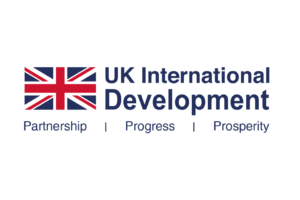UK Aid Transparency
The UK government has commissioned Publish What You Fund to conduct an aid transparency review, focusing on the major departments and cross-government funds spending Official Development Assistance (ODA). We will undertake work to monitor and support the improvement of aid transparency across the UK government and our findings will be published in October 2025. The purpose of the review is to provide tailored advice to the departments on how they can improve their aid transparency as well as to objectively assess the transparency of the UK government departments. We will focus on eight of the largest aid-spending departments plus the cross-government (formally the Conflict, Stability and Security Fund ).
The UK’s aid transparency commitments
The UK has long set high targets for transparency of ODA through its commitments in UK policy, including the Integrated Review of Security, Defence, Development and Foreign Policy and the International Development Strategy. The Foreign, Commonwealth and Development Office (FCDO) was set the target of achieving a ‘very good’ score in Publish What You Fund’s Aid Transparency Index, which it achieved in 2024. As part of its Open Government Partnership 2024-25 National Action Plan, the UK government has committed to improving the transparency of non-FCDO departments, seeking to build on the 2020 aid transparency review, to re-engage these departments and improve publishing practices. The FCDO will play a leading and co-ordinating role by sharing its expertise and convening working groups in UK government following its own aid transparency improvements in the 2024 Index.
Our 2025 review
Between February and October 2025, we will use our Aid Transparency Index methodology as a framework to qualitatively assess departments. The process will involve engagement, data collection, feedback and an independent review. Our methodology will promote ongoing engagement with agencies to identify areas for improvement and maximise progress towards greater transparency.
We will check the quality, quantity and accessibility of their aid data in six areas: Department organisational/ strategic documents; Basic information; Procurement; Results and impact; Financial data; Completeness and timeliness.
This work builds on a similar review which we published in 2020. Rather than assign a final numeric score or ranking, it will focus on where improvements are needed and the progress (or lack of progress) made since the 2020 review.
We will assess the following departments and funds:
| Department | 2023 ODA total* |
| Home Office | £2,954,474,398 |
| Department of Health and Social Care (DHSC) | £534,556,454 |
| Ministry of Housing, Communities and Local Government (MHCLG) | £466,300,000 |
| Department for Energy Security and Net Zero (DESNZ) | £439,742,365 |
| Integrated Security Fund | £326,464,150 |
| Department for Work and Pensions (DWP) | £257,496,976 |
| Department for Education (DfE) | £169,063,333 |
| Department for Science, Innovation and Technology (DSIT) | £166,650,795 |
| Department for Environment, Food and Rural Affairs (DEFRA) | £165,346,874 |
*Figures taken from Statistics on International Development
These departments and the cross-government fund spent a total of £5.4 billion of ODA in 2023.
Our 2020 findings
“How Transparent is UK Aid? A review of ODA spending departments” was published in January 2020 and presented the findings of our review of ten aid-spending departments using our Aid Transparency Index methodology. We also reviewed the transparency of the Conflict, Stability and Security Fund and Prosperity Fund.
Three of the 10 departments scored ’Good’ or ‘Very Good’ in the review, meeting the target set out in the UK 2015 Aid Strategy. We found encouraging signs of improvement on data publication and commitment to transparency over the course of the review, but overall results were mixed.
The review highlighted a lack of available information on the results and impact of aid spending. Performance data was the poorest scoring.
The highest scores came from data on implementing partners used in aid projects, followed by high publication rates on aid types as well as financial figures showing project payments made. The report contained a number of recommendations for improvement for the assessed departments and funds.

This project was funded with UK International Development from the UK government.

